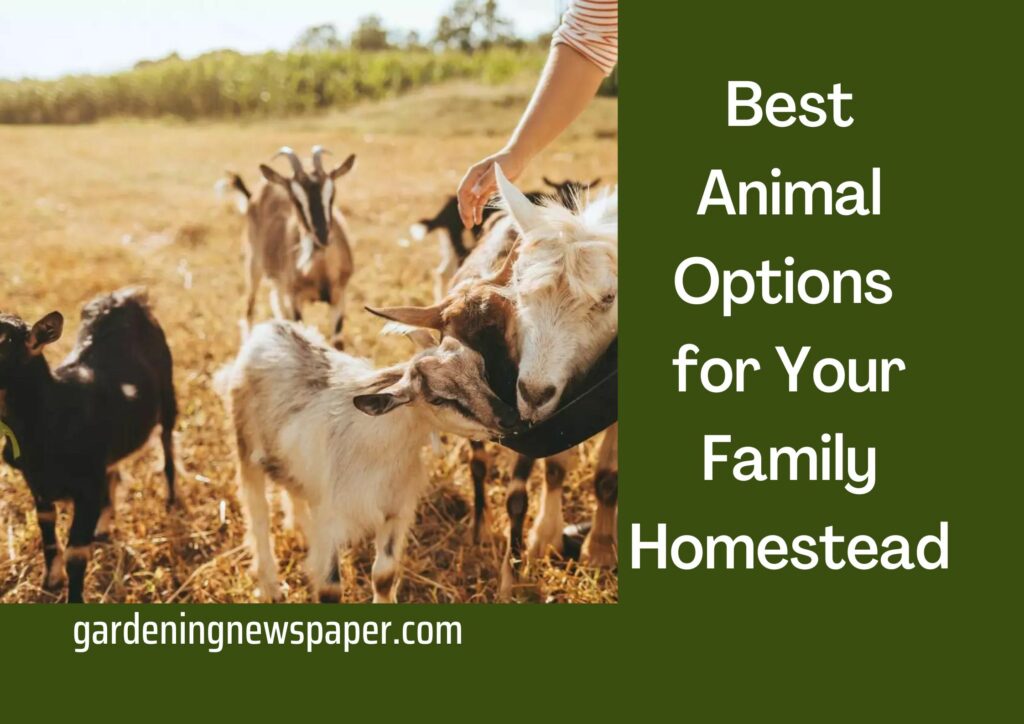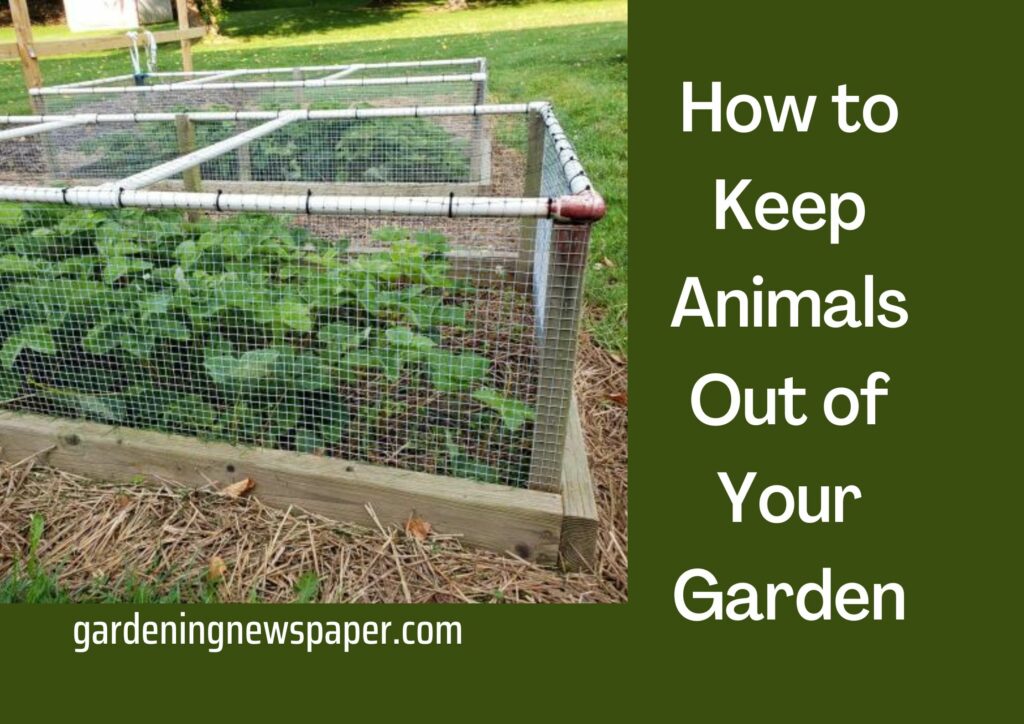Best Animal Options for Your Family – Let us look at chickens, rabbits, ducks, goats, sheep, cows, beef cattle, and pigs.

One of the most exciting parts of having a homestead is being able to raise animals. However, it is extremely important to do your research before purchasing an animal because you want it to thrive on your homestead without complications.
- Selecting an animal for your homestead is largely dictated by why you want the animal in the first place.
- First, you want to ask yourself what your goals are. Some people want to butcher their animals, while others want them for show.
- These will determine which animals you will purchase and how you will feed and shelter them.
- The second question you want to ask yourself is whether you are permitted to have animals on your homestead.
- This is particularly important for those that are establishing an urban homestead, as cities and towns tend to have strict rules regarding which animals are allowed in those areas.
- The third consideration is the space.
- You want to determine how much room your animals will take up on your homestead. You want to ensure that each animal has enough space to grow and thrive.
- Larger homesteads can accommodate larger animals, while the smaller land plots should stick with animals that occupy a minimal amount of territory.
- If you must leave your homestead often, you may want to consider keeping animals that are known to be self-sufficient.
- Animals like rabbits and chickens can be okay on their own for days at a time, so long as automated systems for feeding and watering are provided.
- Another crucial aspect to consider is if your animal will produce something useful to you, such as protection, eggs, manure, fur, or meat. If you’re going to spend money and time on an animal on your homestead it should give in return. Especially since the point of having a homestead is to be self-sufficient.
- Most of your animals should be giving you some type of food or something you can make an income from like sheep fur. You should also think about the animals’ adaptability to your climate. Different breeds are better equipped to handle the cold, while others flourish in the heat.
These points of consideration will help you determine whether an animal is a good fit for your homestead or not because they will all have their inevitable pros and cons.
Let us look at chickens, rabbits, ducks, goats, sheep, cows, beef cattle, and pigs.
- The benefit of having chickens on your homestead is that you will be provided with eggs and meat. Chickens are versatile animals and are fit for small or large homesteads.
- They are usually low-cost, and maintaining them is quite simple (feed them, give them water, and ensure they are protected at night). The disadvantages of raising chickens are The noise., The length of time required for them to lay eggs (up to 24 weeks for some chickens)., The fact that they are prey animals.
- Rabbits can also be raised for meat, but with a simpler process than chickens. Rabbits offer versatility to your homestead.
- They reproduce rapidly, which provides lots of meat for consumption, while the maintenance costs are also relatively low. The main disadvantage of having rabbits is that they are prey animals, which means they demand an effective sheltering strategy. The cleaning of their cages is something that needs to be done often, and most people don’t consume rabbit meat which makes it harder to sell.
- Ducks are like chickens as they can provide meat and eggs. They require a pond or pool, so that is something to consider.
- Their eggs are larger than chickens, and their meat is rich and delicious. Ducks are less prone to diseases when you compare them to chickens and have a lower infant mortality rate. The main disadvantage is that it takes roughly six months for ducks to begin laying eggs. They need to be locked away during the nighttime, or else they risk swimming in the night, making them prey. They are also quite noisy and messy.
- Goats and sheep can be quite difficult to manage as they aren’t particularly obedient to fencing parameters. However, goats produce milk, which is an excellent alternative for people who cannot digest cows’ milk, cheese, and meat.
- They are also excellent at clearing overgrown land. They can easily be raised in a backyard or on a large farm. Some of the disadvantages are that they need to be sheltered adequately to control their potential escapes and tend to require a lot more care than other farm animals. Sheep are like goats but can also provide additional fiber benefits.
- Cows are wonderful animals to keep for milk. They also require minimal daily care aside from milking (if you have a dairy cow) and feeding.
- The disadvantages are that they require a lot of space and a lot of hay for grazing. Breeding cows can also be extremely complicated, with low birth rates. This makes it hard to earn income from cows, so it’s possible that having a cow would only be good for family to eat.
- Pigs are a great animal to have for meat which makes up for their intimidating comportment. The good thing is that these animals consume anything, so you don’t have to throw away items you no longer need.
- They also produce a lot of meat, which makes them effective for feeding a family. In addition, they breed rapidly, rendering them an excellent income source. However, they do have their disadvantages. They consume a lot of food, can be escape artists (so they require proper fencing), and become harder to raise the larger they get.
Family A would do well with chickens, rabbits, and ducks. The quantity of each animal remains highly dependent on the size of their land plot. Similarly, families B and C would do well with larger animals like cows and pigs, although they can also include smaller animals in their homestead if they desire.
- If your homestead has been plagued by pest activity, you may consider having barn owls, cats, dogs, frogs, or ladybugs.
- Barn owls are experts at hunting rodents and can help you control the rodent population on your homestead. You can attract them by providing shelter in strategic areas.
- Other birds are also effective at controlling pests like slugs, webworms, grasshoppers, and snails, which will benefit your garden.
- Cats are another excellent animal for rodent control. Dogs can assist with bedbugs and termites. They have excellent sniffing abilities that help cut pest control costs by locating the initial population or ensuring that no pests have remained after treatment.
- Frogs are effective for insect hunting. However, they may consume ladybugs, which are beneficial, and another pest control animal that feeds on aphids (which kill crops). Regardless, frogs are great to have around if you struggle with caterpillars, moths, or beetles.
- Another concern for a lot of homesteaders is snakes. Dogs, chickens, cats, geese, and ducks are known to be effective at controlling the snake population.
- Note that these animals can only handle baby snakes, so adequate measures need to be taken to control larger snakes on your land.

